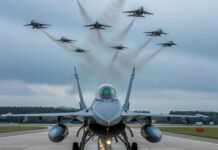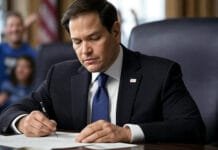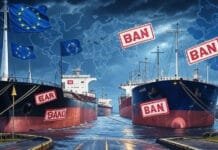Russian President Vladimir Putin has once again issued a stark warning to Western countries about the potential use of nuclear weapons. His alarming statements come amid escalating global tensions and significant shifts in Russia’s defense strategies. During an urgent Security Council meeting in Moscow, Putin emphasized that the Russian government would be revising the rules and conditions surrounding the use of nuclear weapons, signaling a broader strategic shift that could have far-reaching consequences.
In this article, we delve deeply into the implications of Putin’s nuclear threat, exploring the key changes in Russia’s nuclear policies, the geopolitical factors driving these adjustments, and the international response to this unfolding situation.
Changes in Russia’s Nuclear Policy: A Strategic Shift
During the Security Council meeting, Putin announced a pivotal change in Russia’s nuclear doctrine. The revised rules include provisions for the use of nuclear weapons in response to large-scale missile or drone attacks that threaten the sovereignty of the Russian Federation. This represents a significant expansion of the circumstances under which nuclear force could be deployed, particularly in the face of non-nuclear aggression supported by nuclear-capable countries.
The updated nuclear rules will allow Russia to respond with nuclear weapons not only to direct nuclear threats but also to missile or drone strikes that pose a severe risk to Russia’s sovereignty. This change effectively lowers the threshold for a nuclear response and widens the scope of scenarios in which nuclear weapons could be employed.
Implications of the Broadened Nuclear Threshold
The addition of non-nuclear threats—such as drone or missile attacks—to Russia’s list of potential triggers for a nuclear response is a significant shift. This means that any country launching a large-scale attack on Russian territory could face a retaliatory nuclear strike, even if the attacking force does not use nuclear weapons. The inclusion of missile and drone attacks under these rules reflects the evolving nature of modern warfare, where advanced missile technologies and unmanned systems play a critical role.
Putin’s reference to support from nuclear-armed countries also suggests that any proxy attacks on Russia—carried out by smaller, non-nuclear states but backed by nuclear powers—will be treated as direct nuclear aggression. This positions Russia as being on heightened alert, particularly concerning Western military support for Ukraine.
Western Military Support and Ukraine’s Ambitions
The timing of Putin’s warning is particularly significant, as it coincides with Ukraine’s requests for more advanced, long-range missiles from its Western allies. Ukrainian President Volodymyr Zelensky has been pushing for the removal of restrictions that prevent Ukraine from using certain Western-supplied missile systems to strike targets within Russian territory.
Long-Range Missiles in the Ukrainian Arsenal
Currently, Ukraine has access to a variety of highly advanced missile systems, including the Storm Shadow missiles from Britain and the Army Tactical Missile System (ATACMS) supplied by the United States. These missile systems are capable of striking targets with precision over distances of up to 300 kilometers. However, Ukraine is only authorized to use these weapons within its own borders.
Zelensky is lobbying for permission to use these long-range missiles on Russian soil, which would represent a significant escalation in the conflict. Putin’s nuclear threat appears to be a direct response to these requests, signaling that any such attacks on Russian territory could provoke a nuclear retaliation.
The Role of Nuclear Weapons in Russia’s Defense Strategy
For Putin, nuclear weapons are a cornerstone of Russia’s national defense strategy. In his Security Council address, he reiterated that the country’s nuclear arsenal is the ultimate guarantee of its security and the safety of its citizens. This sentiment underscores the importance of Russia’s nuclear deterrent in maintaining the balance of power, not only in Europe but across the globe.
Deterrence and the Global Balance of Power
Putin’s nuclear doctrine is rooted in the concept of deterrence, where the mere threat of a nuclear response is intended to prevent any aggressive actions from Western nations or their allies. By broadening the scenarios in which nuclear weapons could be used, Putin is reinforcing Russia’s nuclear deterrence capabilities, ensuring that any attack on Russian territory—whether direct or indirect—will be met with the possibility of overwhelming force.
This shift in nuclear policy is designed to counterbalance Western military aid to Ukraine, signaling that Russia will not hesitate to escalate its responses if it feels its sovereignty is at risk.
Escalating Tensions Between Russia and NATO
Putin’s warnings also raise concerns about the escalating tensions between Russia and NATO. With NATO members providing military aid to Ukraine, Putin’s statements could be interpreted as a direct message to Western powers, warning them to tread carefully in their involvement in the Ukraine conflict. The notion that attacks on Russia, even by non-nuclear nations, could be met with a nuclear response if they are supported by nuclear-armed countries introduces a new layer of complexity to the geopolitical landscape.
The Risk of a Larger Confrontation
As NATO continues to supply Ukraine with advanced weapons, there is a growing risk of a larger confrontation between Russia and Western powers. Putin’s revised nuclear policy raises the stakes, making it clear that any attack on Russian territory could quickly escalate into a nuclear conflict, with potentially catastrophic consequences for the entire region.
Global Reactions to Putin’s Nuclear Threat
The international community has responded with a mix of concern and condemnation to Putin’s latest nuclear threat. Western governments, in particular, have voiced strong opposition to the idea of lowering the threshold for nuclear weapon use, warning that such a move could destabilize the global security environment.
Diplomatic Repercussions
Diplomats from several Western countries have emphasized the need for diplomatic solutions to the ongoing conflict, urging all parties to avoid actions that could lead to further escalation. The United Nations and other international bodies have also expressed concern over the potential consequences of a nuclear exchange, calling for restraint and dialogue.
At the same time, some countries have warned that Putin’s rhetoric may be intended to create fear and uncertainty, part of a broader strategy to weaken Western support for Ukraine. By raising the specter of nuclear conflict, Putin may be seeking to deter NATO from further involvement in the region.
A Dangerous New Era of Nuclear Strategy
Putin’s warning to the West represents a dangerous new chapter in global nuclear strategy. By revising Russia’s nuclear policies to include responses to missile and drone attacks, Putin has broadened the circumstances under which nuclear weapons could be used. The inclusion of proxy conflicts, where non-nuclear countries attack Russia with the backing of nuclear-armed states, further complicates the situation.
As tensions between Russia and Western countries continue to mount, the risk of a nuclear confrontation becomes more tangible. The global community must now navigate this volatile landscape with caution, seeking diplomatic solutions while preparing for the worst-case scenarios.















